-
 bitcoin
bitcoin $122288.232522 USD
0.16% -
 ethereum
ethereum $4480.662914 USD
-0.22% -
 xrp
xrp $2.962747 USD
-2.32% -
 tether
tether $1.000120 USD
-0.05% -
 bnb
bnb $1145.654223 USD
-2.07% -
 solana
solana $227.105217 USD
-1.67% -
 usd-coin
usd-coin $0.999548 USD
-0.02% -
 dogecoin
dogecoin $0.250875 USD
-2.04% -
 tron
tron $0.340654 USD
-0.49% -
 cardano
cardano $0.837968 USD
-2.52% -
 hyperliquid
hyperliquid $48.960449 USD
0.06% -
 chainlink
chainlink $22.049280 USD
-1.33% -
 ethena-usde
ethena-usde $1.000404 USD
0.02% -
 sui
sui $3.586212 USD
0.20% -
 avalanche
avalanche $29.894916 USD
-4.18%
What are DeFi's synthetic assets?
DeFi's synthetic assets empower users with unprecedented access to real-world assets and advanced financial products within the blockchain ecosystem, unlocking new opportunities for investment and trading.
Feb 18, 2025 at 09:30 am
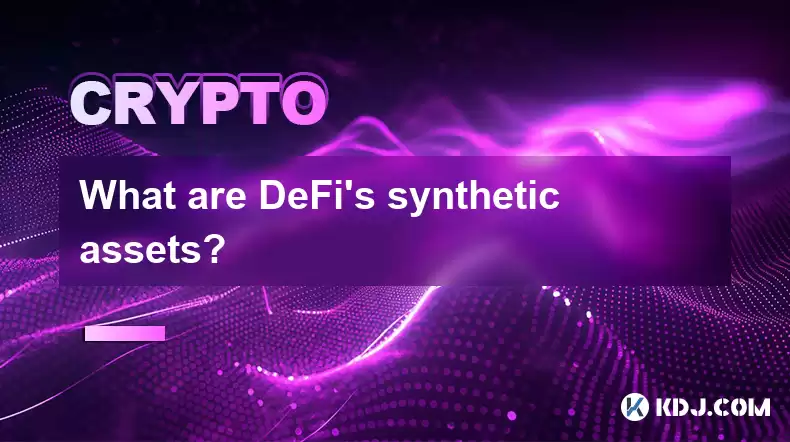
- Understanding the Concept of Synthetic Assets
- Types of Synthetic Assets in DeFi
- Benefits of Using Synthetic Assets
- Steps to Create and Trade Synthetic Assets on DeFi
- Role of Oracles in Synthetic Asset Markets
- Assessing the Risks and Rewards of Synthetic Assets
- Exploring the Current Landscape of Synthetic Asset Platforms
In the decentralized finance (DeFi) landscape, synthetic assets have emerged as a transformative concept that allows users to gain exposure to real-world assets without the complexities and limitations of traditional markets. These assets are cryptographically constructed representations of underlying instruments, empowering DeFi participants to access and trade a wide range of financial products within the blockchain ecosystem.
Types of Synthetic Assets in DeFiDeFi synthetic assets encompass a diverse range of asset classes, including:
- Commodities: Digital proxies for physical commodities such as gold, oil, and agricultural products.
- Stocks: Synthetic representations of publicly traded company shares, enabling investors to participate in equity markets from within the DeFi space.
- Indices: Synthetic assets that track the performance of market indices, such as the S&P 500 or the Nasdaq Composite Index.
- Forex: Synthetic assets that replicate currency pairs, allowing traders to engage in forex trading within DeFi.
Synthetic assets offer numerous advantages over their traditional counterparts:
- Accessibility: DeFi synthetic assets break down barriers to entry by providing access to assets that may otherwise be restricted or difficult to obtain.
- Efficiency: Trading synthetic assets occurs on decentralized exchanges, eliminating intermediaries and reducing transaction costs.
- 24/7 Access: DeFi markets operate 24 hours a day, 7 days a week, providing users with unparalleled liquidity and trading flexibility.
- Leverage: Synthetic assets allow users to leverage their holdings for increased exposure to specific assets, amplifying potential gains.
- Choose a Suitable Platform: Select a decentralized exchange (DEX) or protocol that supports synthetic asset creation and trading.
- Create a Synthetic Asset: Deposit collateral into the protocol and mint a synthetic asset representing the underlying instrument.
- Trade Synthetic Assets: Trade the created synthetic asset on the exchange or with other users within the DeFi ecosystem.
- Close the Position: To redeem the underlying asset, repay the loan and burn the synthetic asset.
Oracles play a critical role in synthetic asset markets by providing reliable and timely asset price data to smart contracts. These oracles ensure that the value of synthetic assets accurately reflects the underlying assets.
Assessing the Risks and Rewards of Synthetic AssetsWhile synthetic assets offer significant benefits, it is important to consider the associated risks:
- Counterparty Risk: When trading synthetic assets on decentralized exchanges, users may face counterparty risk, as the exchanges are typically not regulated.
- Smart Contract Risk: Synthetic asset creation and trading rely on smart contracts, which could be vulnerable to bugs or malicious attacks.
- Liquidity Risk: Synthetic assets may experience lower liquidity than underlying assets, leading to potential slippage in trading.
The DeFi space has witnessed the emergence of numerous synthetic asset platforms, each offering unique features and capabilities. Some notable platforms include:
- Synthetix: A decentralized protocol that allows users to create and trade synthetic assets collateralized with SNX tokens.
- Mirror Protocol: A platform that enables users to create synthetic assets pegged to the price of stocks, commodities, and indices.
- UMA: A decentralized protocol that provides a framework for creating synthetic assets with custom risk profiles.
- Hodling real-world assets without direct ownership
- Hedging against price fluctuations
- Arbitraging price discrepancies
- Earning yield through lending and borrowing
- Collateralized synthetic assets are backed by a deposit of collateral, while uncollateralized synthetic assets are not.
- Smart contracts rely on oracles to provide external data feeds that are used to update the price of synthetic assets.
- Synthetic assets have the potential to disrupt traditional financial markets by providing accessible and efficient alternatives for accessing and trading real-world assets.
Disclaimer:info@kdj.com
The information provided is not trading advice. kdj.com does not assume any responsibility for any investments made based on the information provided in this article. Cryptocurrencies are highly volatile and it is highly recommended that you invest with caution after thorough research!
If you believe that the content used on this website infringes your copyright, please contact us immediately (info@kdj.com) and we will delete it promptly.
- BlockDAG, DOGE, HYPE Sponsorship: Crypto Trends Shaping 2025
- 2025-10-01 00:25:13
- Deutsche Börse and Circle: A StableCoin Adoption Powerhouse in Europe
- 2025-10-01 00:25:13
- BlockDAG's Presale Buzz: Is It the Crypto to Watch in October 2025?
- 2025-10-01 00:30:13
- Bitcoin, Crypto, and IQ: When Genius Meets Digital Gold?
- 2025-10-01 00:30:13
- Stablecoins, American Innovation, and Wallet Tokens: The Next Frontier
- 2025-10-01 00:35:12
- NBU, Coins, and Crypto in Ukraine: A New Yorker's Take
- 2025-10-01 00:45:14
Related knowledge

How to track DeFi activity on a block explorer
Sep 04,2025 at 05:36pm
Bitcoin's Role in Decentralized Finance1. Bitcoin remains the cornerstone of the cryptocurrency ecosystem, serving as both a store of value and a benc...
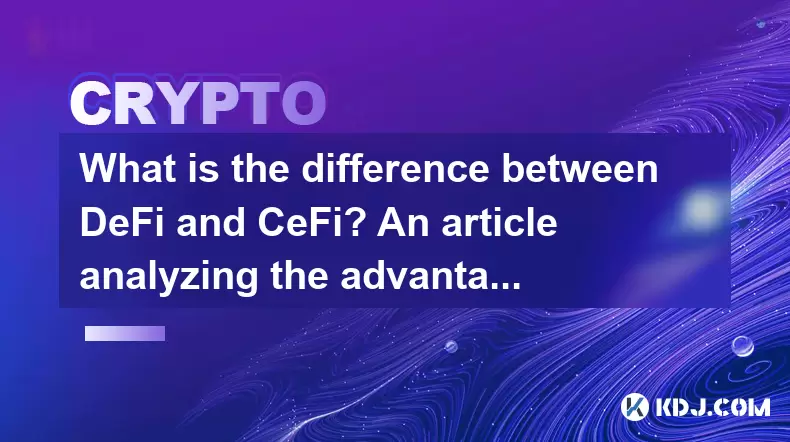
What is the difference between DeFi and CeFi? An article analyzing the advantages and disadvantages of both
Jun 13,2025 at 03:57am
Understanding the Foundations of DeFi and CeFiTo fully grasp the difference between DeFi (Decentralized Finance) and CeFi (Centralized Finance), it’s ...
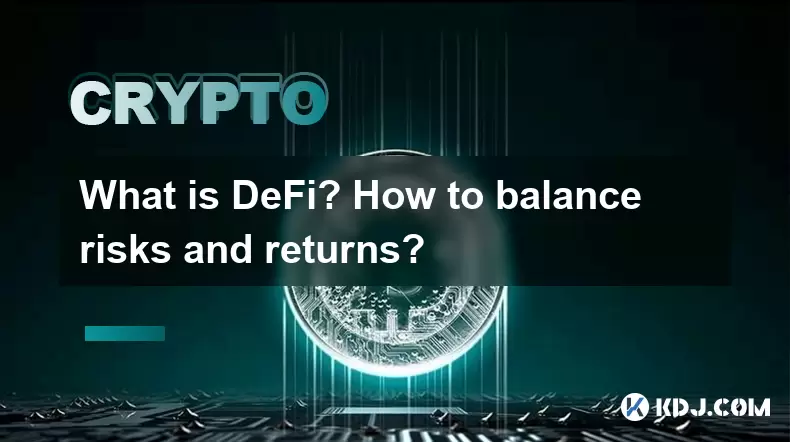
What is DeFi? How to balance risks and returns?
May 31,2025 at 12:22pm
What is DeFi? How to Balance Risks and Returns? Decentralized Finance, commonly known as DeFi, represents a revolutionary shift in the financial ecosy...
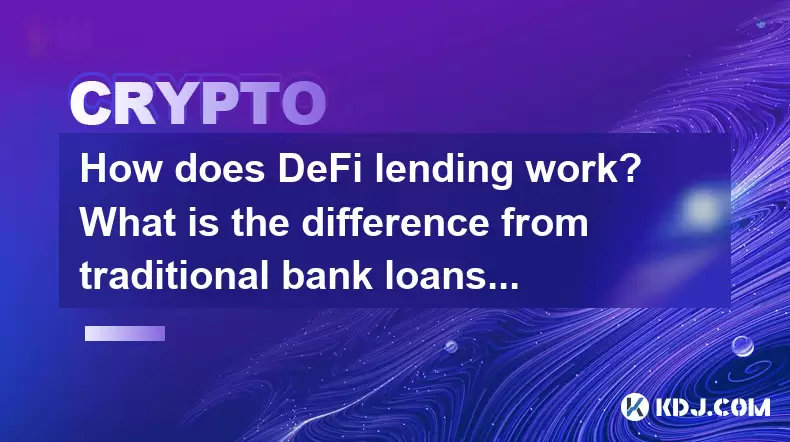
How does DeFi lending work? What is the difference from traditional bank loans?
May 29,2025 at 05:36pm
Introduction to DeFi LendingDeFi lending, or decentralized finance lending, represents a revolutionary shift in the way borrowing and lending are cond...
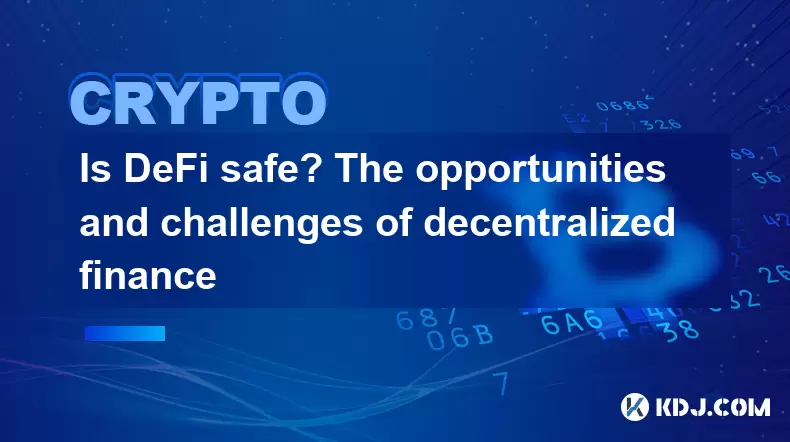
Is DeFi safe? The opportunities and challenges of decentralized finance
May 27,2025 at 02:28pm
Decentralized Finance, commonly known as DeFi, has revolutionized the financial landscape by offering a range of financial services without the need f...

DeFi Mining Tutorial: How to Maximize Profits and Reduce Risks?
May 27,2025 at 07:42am
DeFi, or Decentralized Finance, has opened up a new world of opportunities for crypto enthusiasts looking to maximize their profits through various mi...

How to track DeFi activity on a block explorer
Sep 04,2025 at 05:36pm
Bitcoin's Role in Decentralized Finance1. Bitcoin remains the cornerstone of the cryptocurrency ecosystem, serving as both a store of value and a benc...

What is the difference between DeFi and CeFi? An article analyzing the advantages and disadvantages of both
Jun 13,2025 at 03:57am
Understanding the Foundations of DeFi and CeFiTo fully grasp the difference between DeFi (Decentralized Finance) and CeFi (Centralized Finance), it’s ...

What is DeFi? How to balance risks and returns?
May 31,2025 at 12:22pm
What is DeFi? How to Balance Risks and Returns? Decentralized Finance, commonly known as DeFi, represents a revolutionary shift in the financial ecosy...

How does DeFi lending work? What is the difference from traditional bank loans?
May 29,2025 at 05:36pm
Introduction to DeFi LendingDeFi lending, or decentralized finance lending, represents a revolutionary shift in the way borrowing and lending are cond...

Is DeFi safe? The opportunities and challenges of decentralized finance
May 27,2025 at 02:28pm
Decentralized Finance, commonly known as DeFi, has revolutionized the financial landscape by offering a range of financial services without the need f...

DeFi Mining Tutorial: How to Maximize Profits and Reduce Risks?
May 27,2025 at 07:42am
DeFi, or Decentralized Finance, has opened up a new world of opportunities for crypto enthusiasts looking to maximize their profits through various mi...
See all articles










































































